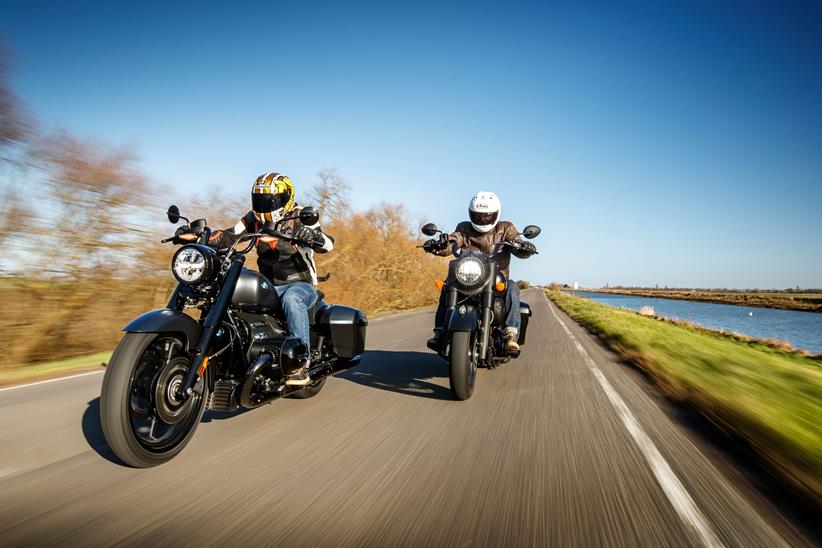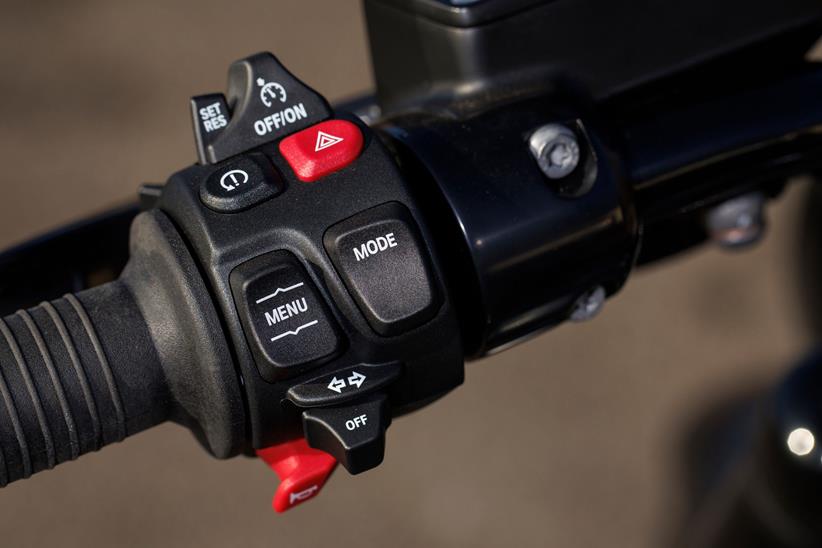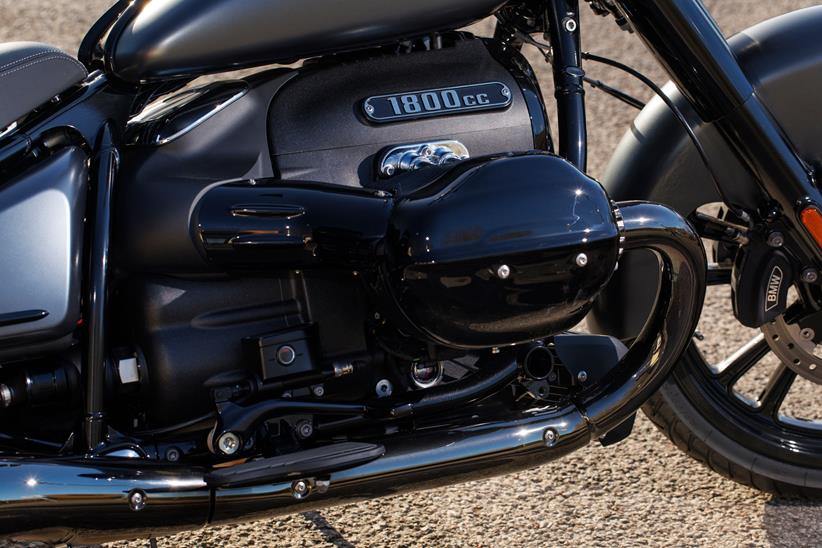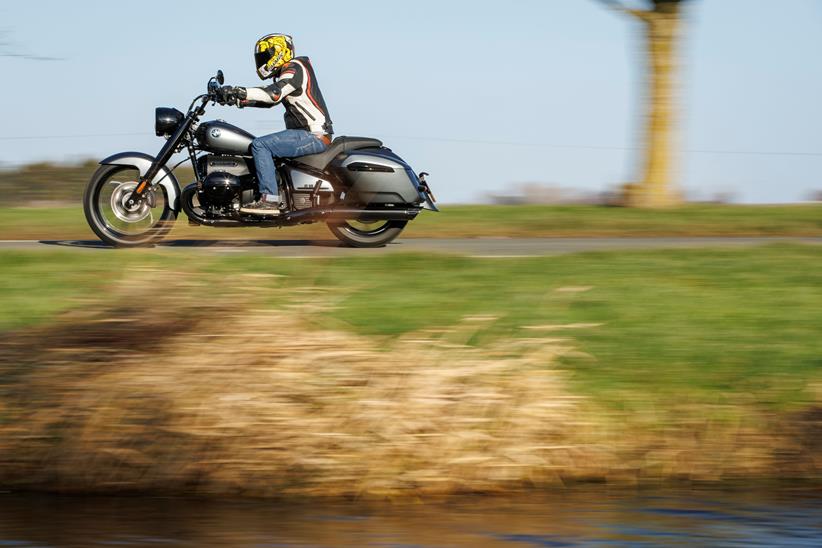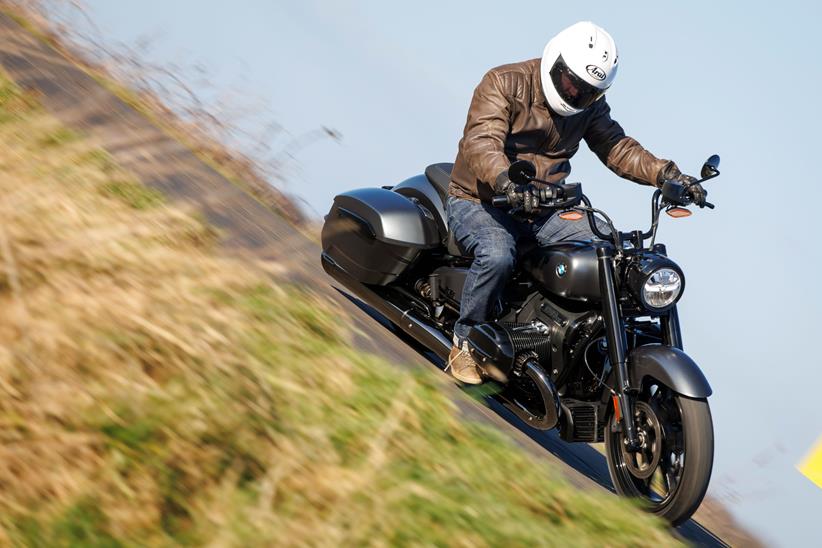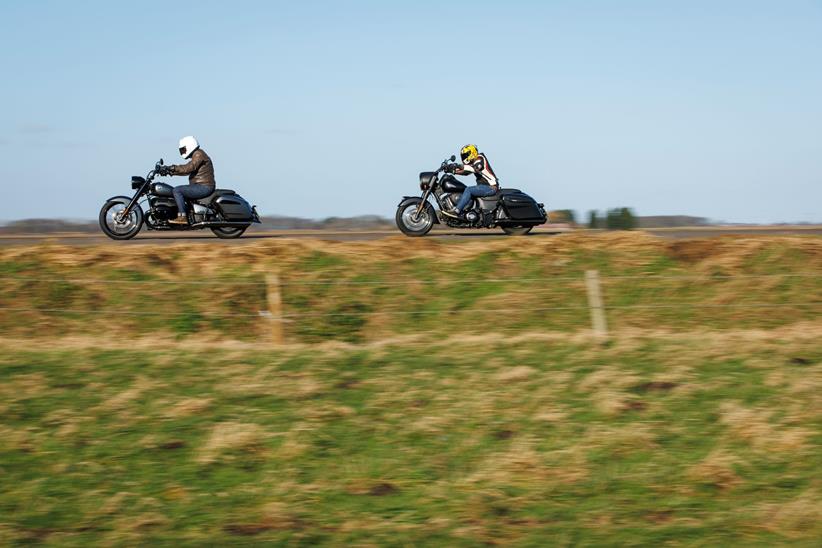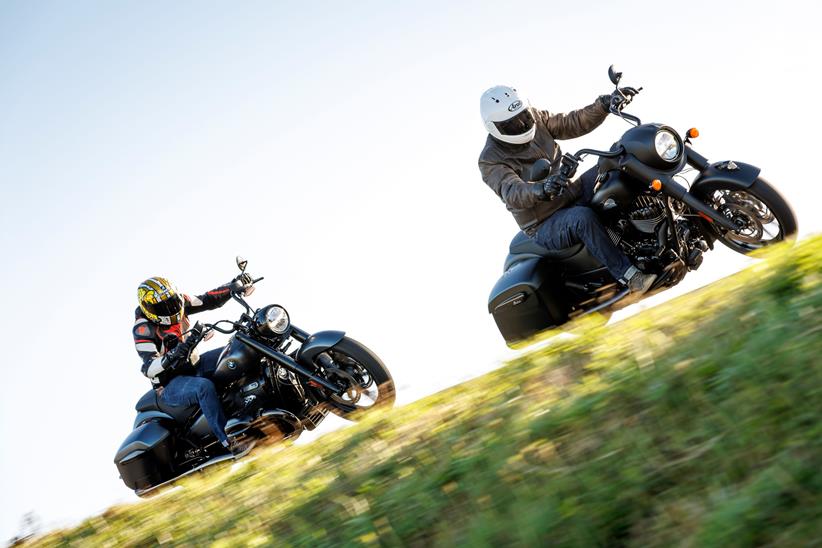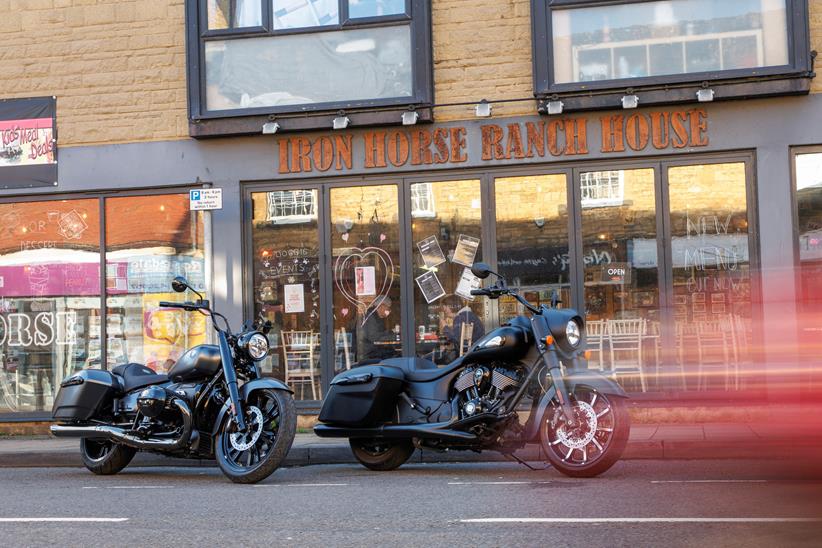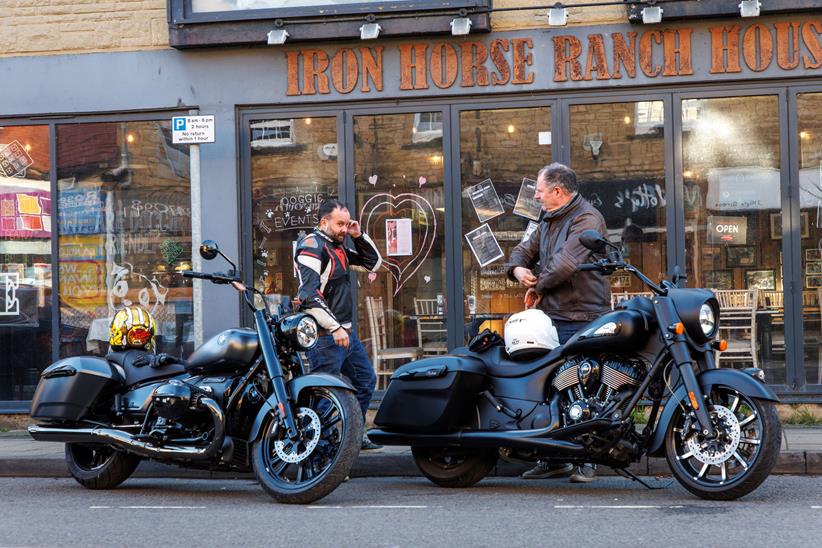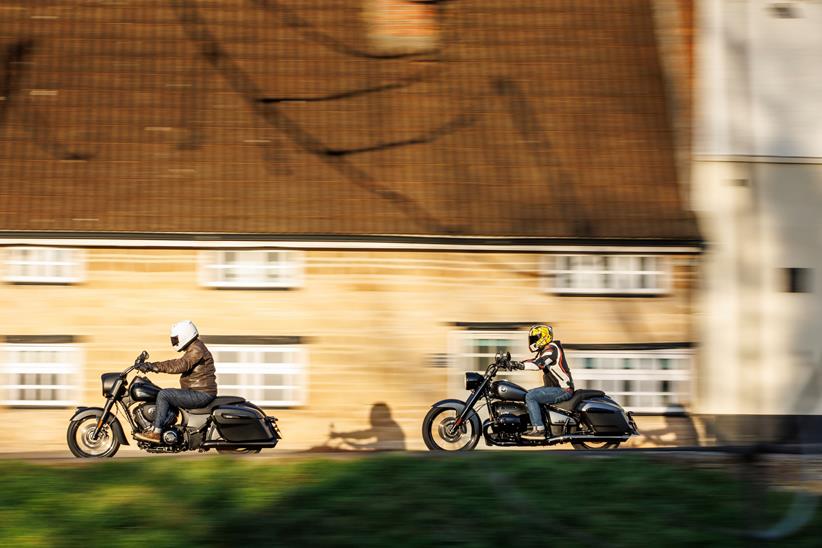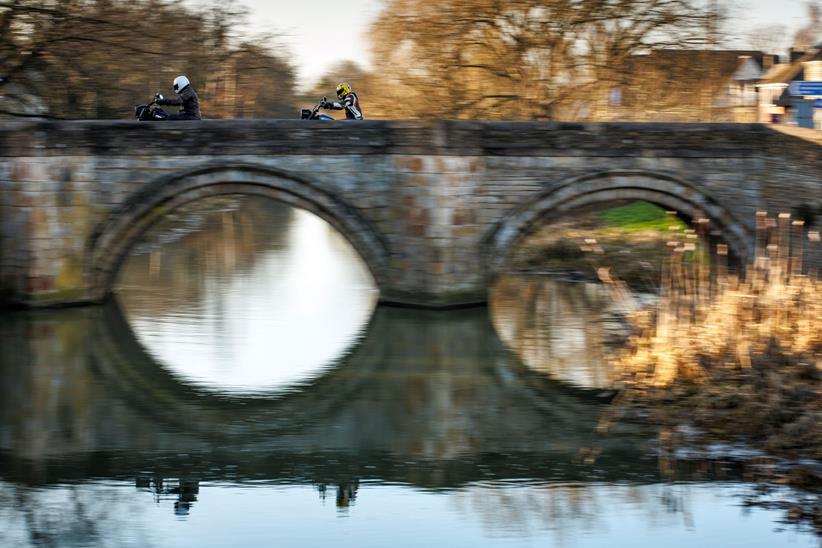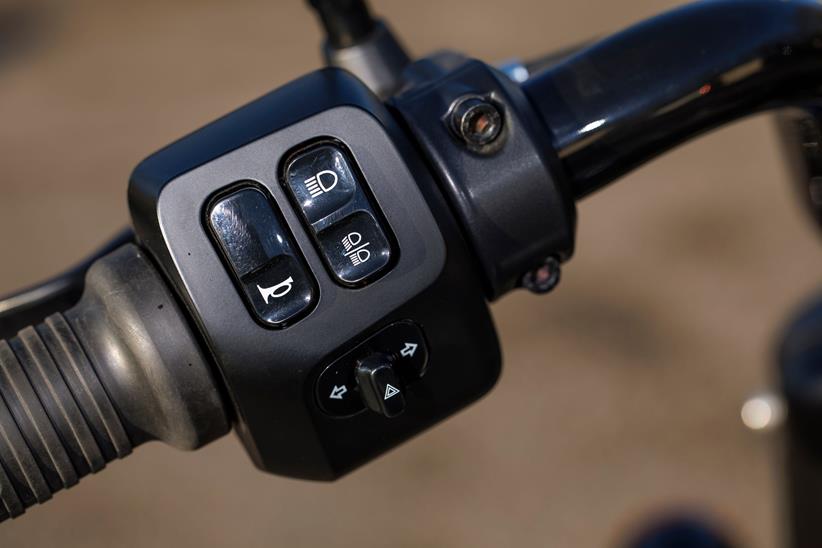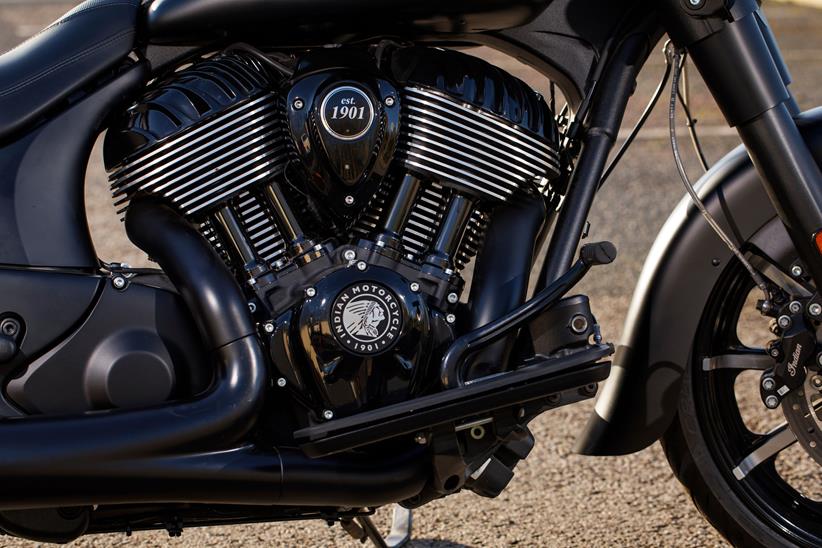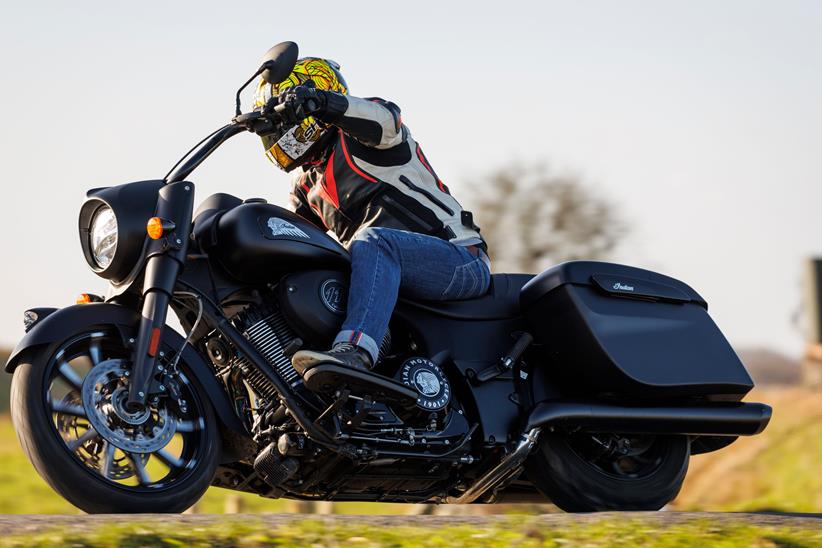Can BMW’s blacked-out R18 Roctane steal a slice of the Indian Springfield Dark Horse’s American pie?
You can’t help but admire BMW’s determination to take on classic US cruiser motorcycle brands Harley-Davidson and Indian with their all-new R18 Roctane bagger.
First, in 2020, they came up with the standard R18 which, with an all-new, 1800cc, air-cooled big twin and laid-back attitude matched its American cousins’ performance and approach. It had a blend of cruiser yet classic BMW style that was credible and added a boxer twin layout plus lots of tech and quality, that remained true to the German marque’s values.
To underline that determination, BMW then followed it up in 2021 with the Harley Road King-styled R18 Classic, H-D Street Glide-style BMW R18B and, in 2022, the full-dress R18 Transcontinental as inspired by Harley-Davidson’s Electra Glide and Indian’s Roadmaster.

But the latest variant, the R18 Roctane, is arguably the most attitude-laden yet. A blacked-out, pared-down and up-styled naked bagger with hard panniers, it’s aimed directly at both Harley’s Road King Special and Indian’s Springfield Dark Horse. So how does it measure up? We pitted it against the latter across Britain’s own plains and prairies – the Fens or the Wild East – to find out.
From the outset, lining up the bikes at MCN’s Peterborough HQ to do some close-up photography before the bikes get subjected to winter road grime, it’s immediately clear that we’ve a battle on our hands.
Fast facts – Indian Springfield Dark Horse spec

- Engine 1890cc air-cooled 4v V-twin
- Frame Tubular steel double cradle
- Suspension 46mm RWU telescopic forks, with monoshock rear
- Front brake 2 x 300mm discs with four-piston calipers. ABS
- Rear brake 300mm disc, two piston caliper. ABS
- Seat height 650mm
Fast facts – BMW R18 Roctane spec

- Engine 1802cc DOHC boxer twin
- Frame Tubular steel double cradle
- Suspension 49mm RWU telescopic forks, with monoshock rear
- Front brake 2 x 300mm discs with four-piston calipers. ABS
- Rear brake 300mm disc, four piston caliper. ABS
- Seat height 720mm
Although one’s a BMW, the other an Indian, the former a boxer twin and the latter a Vee, in most other respects the two are inseparable – at first glance anyway.
Both are air-cooled twins of around 1800cc, boast identical peak power of 91bhp and weigh the wrong side of 350kg. Both have the required bagger profile of big front wheel, high bars (and no screen or fairing), minimal clocks, footboards and hard lockable panniers. And, of course, as ‘attitude’ bagger fashion dictates, both are also as black as coal… at midnight!
All of this is to BMW’s credit, of course, and testament to how thoroughly the whole R18 family has been designed and styled. Those with long memories may remember BMW’s last attempt at a boxer cruiser, the fugly failure that was the R1200C of 1997.

Even a starring role in a Bond film failed to generate any significant sales. By massive contrast, the R18 in all its guises – and particularly here in latest Roctane bagger form – is a stylish, quality, class act.
But there are differences between them apart from the obvious engine layout. Although our two test bikes are priced closely at £24k and £25k respectively, the BMW normally starts at £21,750, a significant four grand less than the Indian.
In this case its price has been bumped up by extras including special paint (£350), heated grips (£255, also available as an option on the Indian), tyre pressure control (£230) and fancy wheels.

In other words, the Beemer’s significantly cheaper than the Indian yet still better equipped by way of riding modes.
Second, although the two bikes’ bagger profiles look the same, their attitude and posture are different, with the Indian being noticeably lower and more laid back thanks to its 70mm lower seat and smaller 19/16in wheels (the BMW has a 21in front and 18in rear), something particularly conspicuous when I switch from the Indian to the R18.
For the first leg, though, from MCN towers out east into the Prairie-like, windswept Fens beyond Crowland (OK, at eight degrees and with major windchill it’s not Kansas or Missouri, but I can dream, that’s what these bikes are all about after all), I take the benchmark Indian.

And, as I knew it would be having ridden a Springfield before, the Indian’s a substantial and smile-inducing place to be.
Although undeniably big and heavy (so heavy, in fact, that getting it off its sidestand and wiggling or walking it around is truly daunting with the whole thing feeling like it’s made of iron), on the move the low seat is reassuring, the riding position easy and comfortable the steering surprisingly light and neutral while the big Vee is tractable and pleasing. Even the lack of a screen is no real bother for cruising.
The Indian’s basic bluntness also starts to be a blessing. Bikes like these are all about recreating a 1960s Americana vibe involving Chevy BelAirs and burger joints, so the Springfield’s simplicity, lack of modes or frills is, on reflection, no loss at all while its inimitably fruity V-twin exhaust note, when giving it some gas, is simply a blast.

Yes, the American bike is a little crude and clunky, but it’s also classy, imposing, eye-catching, effective and makes you feel more ‘king-of-the-road’ than any boxer twin ever could.
Once I swap to the BMW, my earlier impression about ‘attitude’ is immediately confirmed. Where the Indian was laid back, low and sumptuous, the Roctane is more conventionally upright, with a taller seat and your feet more below you, which they sort of have to be considering the location of the boxer twin’s cylinders.
Footpeg position hasn’t been an issue on earlier R18s I’ve ridden, either the standard R18 or full-dresser Transcontinental. But the Roctane, with its big 21in front wheel and mini-ape hangers, is the most chopper-y of the lot and as a result you almost instinctively want to place your feet further forward – but can’t.

Instead, small footboards are placed as close to the cylinders as possible and you have to use a heel-toe gearchange to get through the cogs. It’s not ideal, or particularly comfortable and relaxing, and does instil a notion that’s difficult to remove that maybe the boxer twin layout wasn’t the best one for a cruiser, after all. There’s no way you could use highway pegs on it.
But there are plenty of compensations. Awkward (in this guise) boxer architecture aside, that 1802cc twin is still impressive, its exposed shaft-drive is stylish and welcome, while its added tech, such as the three modes (Rain, Rock and Roll, with ‘Rock’ being the sharpest) are effective, if you actually want that sort of thing.
The BMW also seems lighter, more nimble and more manageable, its quality and detailing are impeccable, and it also gives the overall impression of being the more conventional, versatile motorcycle. Its handlebar grips are the slimmer, sportier European variety rather than the chunky, clunky fat versions Indian and Harley use. Its dash is clearer with more features, and it’s less of a culture shock all round.

But then, isn’t bags of American culture what you want? Besides, all that’s contradicted slightly by the R18 also having much the smaller fuel tank.
We head back south and stop for lunch, appropriately enough, at Market Deeping’s Iron Horse Ranch House (you can’t accuse us of not trying to get into character) where I’m delighted to munch on the appropriately named Bagger Brunch Sandwich and find I’m not the only one having slight doubts over the Roctane.
“Don’t ask me, I’m a huge Indian fan,” confesses Iron Horse manager Rachel. “The BMW’s cylinders are in the wrong place.”

While, after some initial doubts, co-tester Jimmy is warming to the Indian, too.
“The BM feels more conventional, but I like the low-down grunt and the sound of the engine on the Indian.”
For our final leg we take the scenic route back towards Peterborough, chasing the dying sun and I’m back again on the Indian. It seems apt. The Dark Horse may be the more expensive, inexplicably so, it may be a little clunky and crude and, in places (the front fender mascot, the gaudy, gargantuan headlamp nacelle) and it may have no real tangible advantages over the BMW, but it is the real deal.
The BMW, meanwhile, matches the Indian in most respects (performance, handling), beats it in some (spec, finish, options, price) and is almost certainly the better all-round bike. But the Indian is the more authentic bagger and for most that’ll probably be enough.
Bagger bit of a detail…
BMW R18 Roctane

- More sophisticated (in this spec) BMW switchgear boasts not only riding modes and cruise control but hazard warning and also heated grips
- Boxer twin is grunty, boasts shaft drive – and is beautifully finished

Indian Springfield Dark Horse

- The Indian has chunkier, more basic switches and fatter, US-style handlebar grips. There are no modes or frills but cruise control is welcome
- ‘Thunderstroke’ V-twin lacks modes. Transmission is belt-drive
- 19in front wheel but the front end feels even heavier than the BMW’s

The MCN verdict: “Indian have it in the bag”
It’s always difficult to be objective about bikes like these. Blacked-out baggers are so American that anyone other than Harley or Indian building them feels like sacrilege.
And yet… BMW should be commended for giving it a not just a good, but a great go, while at the same time remaining true to their identity. All of the R18s have impressed, mostly for their stonking engines, fabulous build quality, equipment and classic BMW-cum-cruiser style. But having compared it to its class benchmark, the new Roctane is probably the least successful.

By most objective measures it’s as good or better than the Indian. But it’s also a little blander, a little more conventional and its forced footpeg placement is more than a little annoying.
Don’t get me wrong: the Roctane’s not a bad bike – far from it. It’s classy, effective and, if you’re a BMW fan who wants a bagger, is close to perfect.
But most bagger buyers more likely lust after a Harley or Indian and the Springfield Dark Horse, while pricey and imperfect, ticks boxes the Beemer simply can’t.

Pros:
- BMW quality and value
- Indian character and authenticity
Cons:
- BMW foot peg position
- Indian price
- Not riding in the US
While you’re here: How MCN tests bikes
Our highly experienced team of road testers grind out hundreds of miles, come rain or snow, on the UK’s pothole-ridden roads to decide which bike is best in a particular category.
Using years of riding and racing experience (on and off-road), our expert journalists are able to assess the capabilities of a machine and translate that into understandable language to help MCN’s readers make an informed buying decision. Pitching bikes against their main rivals, we aim to give a conclusive verdict on which bike is best for your needs and your budget.
Using their considerable knowledge of the motorcycling market and audience, they can put a motorcycle into context and deliver a verdict that means something to anyone considering buying a particular machine, whether it be a cutting-edge, 200bhp sportsbike, a tall adventure weapon or a low-capacity 125cc machine.
When we ride the bikes in the UK we tend to do at least one full day of riding on various different types of road and in varying conditions. Our testers will then spend another day riding the bike – with rivals – to get images and video footage for our print and online reviews.
We will also, often, weigh the bikes, speed and dyno test them to see just how accurately the manufacturer claims are in these areas to give a more empirical assessment.
